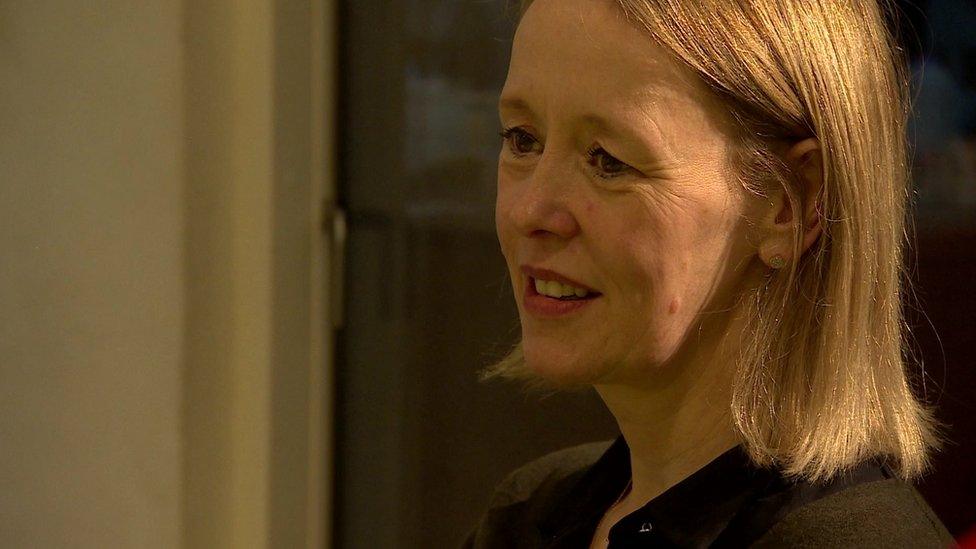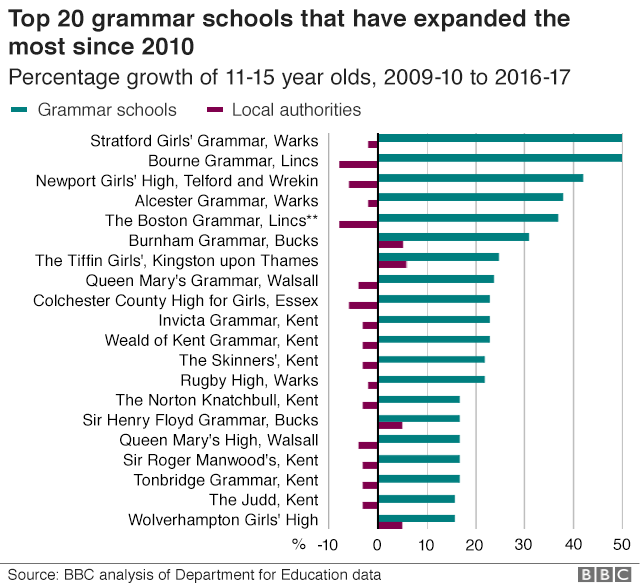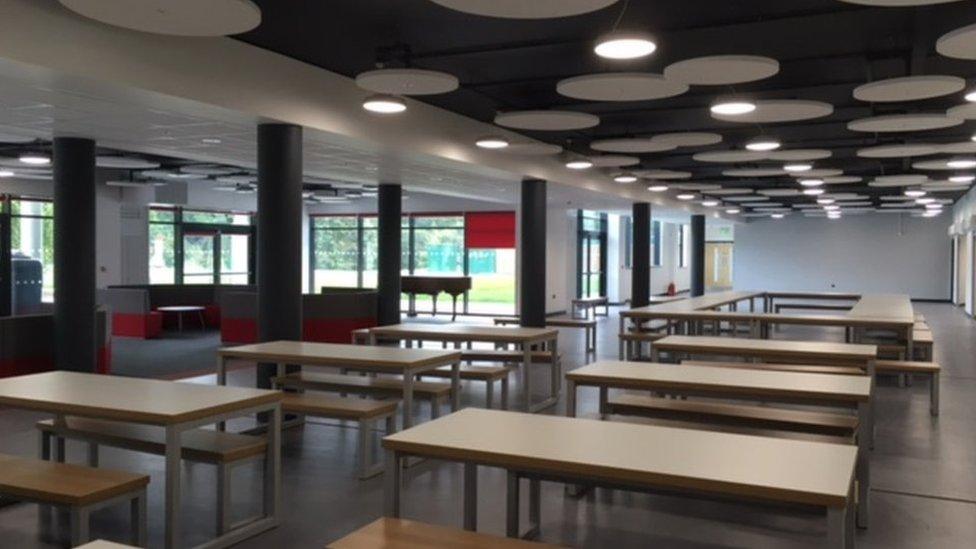Is parent power driving grammar school expansion?
- Published
- comments

Ruth Cornish wants an academically selective education for Henry and Florence
Like many mothers, Ruth Cornish started thinking about choosing secondary schools when her children were eight or nine years old.
She wanted an academically selective school for Henry and Florence.
The family live in Gloucestershire, a county with some of the oldest grammar schools in England.
"I do think it's harder for children to get good results, to get to university, get a good job. So anything we can do to help them seems to me a no-brainer."
She's delighted that since 2010, every grammar school in Gloucestershire has added extra places, even though there hasn't been an increase in 11-year-olds.
"I think it's a consumer society - parental demand is there and children want to go."
There had been growing pressure for more places, with fears that competition was becoming fierce, with children travelling from outside the county to get in after passing the grammar school entrance test.
Ruth told me: "You research your chances and realise you're competing with Swindon, Wiltshire and Bristol."

Controversial
Gloucestershire isn't the only place in England where grammars - academically selective schools that offer places based on an exam taken in the last year of primary school - are expanding.
Our analysis shows how much grammar schools have grown across England since 2010, often not in areas where there was an immediate need for more secondary places overall.

Ruth Cornish believes parents want grammars
The number of pupils aged 11-15 in England's grammar schools has gone from 110,600 in 2009-10 to 118,200 in 2016-17.
That's a 7% growth at a time when the number of 11 to 15-year-olds in the areas with grammar schools has fallen by 2.5%.
It adds up to the equivalent of about 11 new average-sized grammar schools.
As more children go through the schools, with new pupils taking up those places every year, it means that by 2020-21 the equivalent of 21 new grammar schools would have been created in a decade.
All this is at a time when the government has dropped plans to create completely new grammar schools because the plans were too controversial.

For a full list scroll to the bottom of the page.
The expansion is driven partly by demand from parents like Ruth, and partly by pressure on school budgets.
Grammar schools tend to get less funding per pupil because many are in areas where schools have historically received less.
They also admit very few pupils from poorer backgrounds, who bring top-up funding in the form of the pupil premium.
Many grammar schools we approached were hesitant about talking publicly about the financial pressures.
Alcester Grammar School in Warwickshire has been expanding its intake over the last few years from 450 to 750 students. Its Principal, Clive Sentance, says it is mainly about "achieving major economies of scale".
He says the school has taken action to respond to financial challenges from increasing class sizes to asking for voluntary donations but believes that without expanding pupil numbers, those steps "would not have been sufficient".

What is a grammar school?
Grammar schools are state secondary schools that select their pupils by means of an exam taken by children at age 11, sometimes known as the 11-plus.
There are 163 grammar schools in England, out of some 3,000 state secondaries, and a further 67 grammar schools in Northern Ireland.
There are no state grammars in Wales or Scotland.

There are concerns that grammar school expansion could reach a tipping point in terms of its impact.
Jon Andrews from the Education Policy Institute says negative effects on results increase at the point when 70% of children already doing well can get a grammar school place.
"Our research shows that as you increase the number of grammar school places in an area, the penalties on those who miss out on getting into grammar school increase."
Poorer children are least likely to get a grammar school place and most likely to suffer this negative effect.
This doesn't mean that schools that don't select on ability don't have ambition.
Stratford upon Avon School has been improving its results and encouraging pupils to go into its sixth form thinking ambitiously about university.
Head teacher Neil Wallace knows he has to compete to attract families to the school.
He is also competing for funding, as with each pupil that enrols comes at least £4,000 a year.

Neil Wallace is head at Stratford upon Avon School
"The biggest source of income any school has is intake. Adding an additional class of 30 would bring in roundly £120,000 to a school budget in each year."
Both grammar schools nearby have expanded significantly.
"That's a tension regardless of what the school is. It may be selective or not selective, it could be a free school that opens and upsets a local equilibrium."
Warwickshire has seen the number of 11-year-olds go up 7% since 2010, but one nearby grammar school increased its intake by 66%.

Data analysis by Wesley Stephenson, Ransome Mpini and Robert Cuffe. Design by Sumi Senthinathan and Sandra Rodriguez Chillida.
Methodology:
The analysis uses data from the schools census, external published on the Department for Education website. It looks at the change in the number of pupils aged 11-15 in nearly all grammar schools in England between 2009-10 academic year and the 2016-17 academic year. A comparison is made between this and the change in the total number of pupils aged 11-15 in the local authority areas in which each grammar is located.
* Data excludes three grammar schools that changed the age of intake during the period.
Poole Grammar School
Parkstone Grammar School
Cranbrook School, Kent
** Boston High School and Boston Grammar School were undergoing a merger in 2010 which was later abandoned. This has some effect on some but not all of the growth at these schools.
*** Chatham and Clarendon Grammar School was created in 2013 from the merger of two grammar schools. Change is calculated using the combined data for the two schools in 2009-10.
- Published27 June 2017
- Published8 September 2017

- Published8 September 2016
